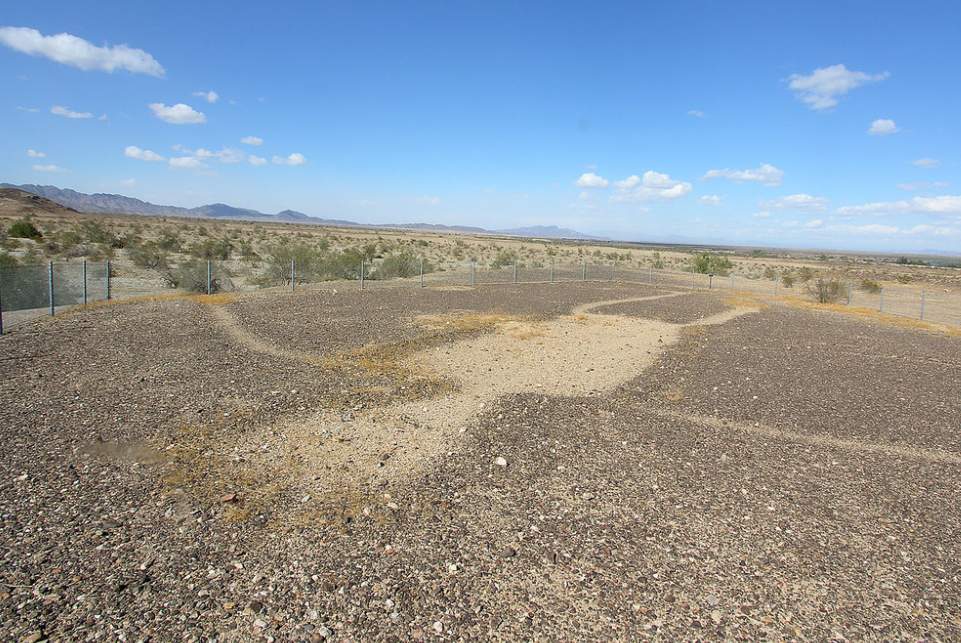Devils Postpile National Monument
Devil’s Postpile National Monument is located near Mammoth Mountain in eastern California. The Devil’s Postpile (the name refers to a dark cliff of columnar basalt) is a strange rock formation of columnar basalt that encompasses 798 acres. The area includes two main tourist attractions:
-
Devils Postpile formation
-
Rainbow Falls is a stunning waterfall in the Middle Fork of the San Joaquin River
Furthermore, the John Muir Trail and Pacific Crest Trail merge into one trail and pass through the National Monument, which lies within the borders of the Ansel Adams Wilderness in the Sierra Nevada of California, USA. The Ansel Adams wilderness spans an elevation of 3,500 to 13,157 feet, forming the northern end of the High Sierra.

Devils Postpile in Early 19th Century
The monument was once part of Yosemite National Park, California. However, the Devil Postile National Monument was created in 1911 and has been widely and officially referred to as plural without the apostrophe since the 1930s. Moreover, when the gold was discovered near Mammoth Lakes, it actually left the Postpile monument as public land and later built a hydroelectric dam that blasted the Postpile into the river.
John Muir, the president of Taft, who was an influential Californian, persuaded the federal government to stop the demolition. There, his voice was listening carefully, and President William Howard declared the area a National Monument in 1911.
Animals, Birds, Flora, and Fauna
The Devils Postpile area contains different animal species, i.e., pine martens, black bears, coyotes, mule deer, black cottonwood, quaking aspen, willows, and alder. There are numerous types of wildflowers, such as alpine shooting stars and cinquefoil, commonly seen. In the summer season, white-crowned sparrows and dark-eyed juncos are common.

Devils Postpile
Geologists believe, this area was created by a lava flow somewhere 100,000 years ago. Devil Postpile formational thickness is estimated between 400 and 600 feet. Due to the large thickness, the mass pooled lave cooled sluggishly, and the columns are shaped long and symmetrical.
The columnar is jotted in a certain shape due to the types of lava contracts in the cooling process. After that, a glacier removed the mass of rock and polished the surface on top of the columns with visible glacial striations and glacial polish. An average Postpile column is two feet in diameter; however, few are more than 3.5 feet and 60 feet long.
Simultaneously, they look like tall posts stacked in a pile. If the lava flow had cooled in a perfect way, then the columns would have been hexagonal. But many columns have varied polygonal cross-sections due to variations in cooling. Moreover, another feature of the Devil’s Postpile in a special category is the lack of horizontal jointing.

Similar Structure
Hence, the basaltic columns are not unique but are indeed impressive. Basalt columns are a common volcanic feature and occur on several scales. The most popular similar structures are Giant’s Causeway in Ireland, Svartifoss in Vatnajökull National Park in Iceland, Fingal’s Cave in Scotland, Titan’s Piazza in Armenia, Prismas Basálticos in Huasca de Ocampo, Mexico, Sheepeater Cliff at Yellowstone National Park in Wyoming, “Organ Pipes” in New Zealand, Gilbert Hill in Mumbai, India, Oran Pipes National Park in Australia, and “Column Cape” in Chile. These days, Devil’s Postpile offers active hiking and camping locations and wonderful views, including those of the 100-foot Rainbow Falls.

Know before you go
During the winter, the Devils Postpile National Monument is closed and reopens in the summer. The Devils Postpile is an amazing place but worth the hike to the top. However, the hike to Rainbow Falls is a bit moderate. Also, it’s a great hike from Devil’s Postpile to Minaret Falls—an easy but beautiful walk.

Read More: The Mysterious Stones of Pokaini Forest
Product You May be Interested in
- Feel Emotional Freedom! Release Stress, Heal Your Heart, Master Your Mind
- 28-Day Keto Challenge
- Get Your Customs Keto Diet Plan






